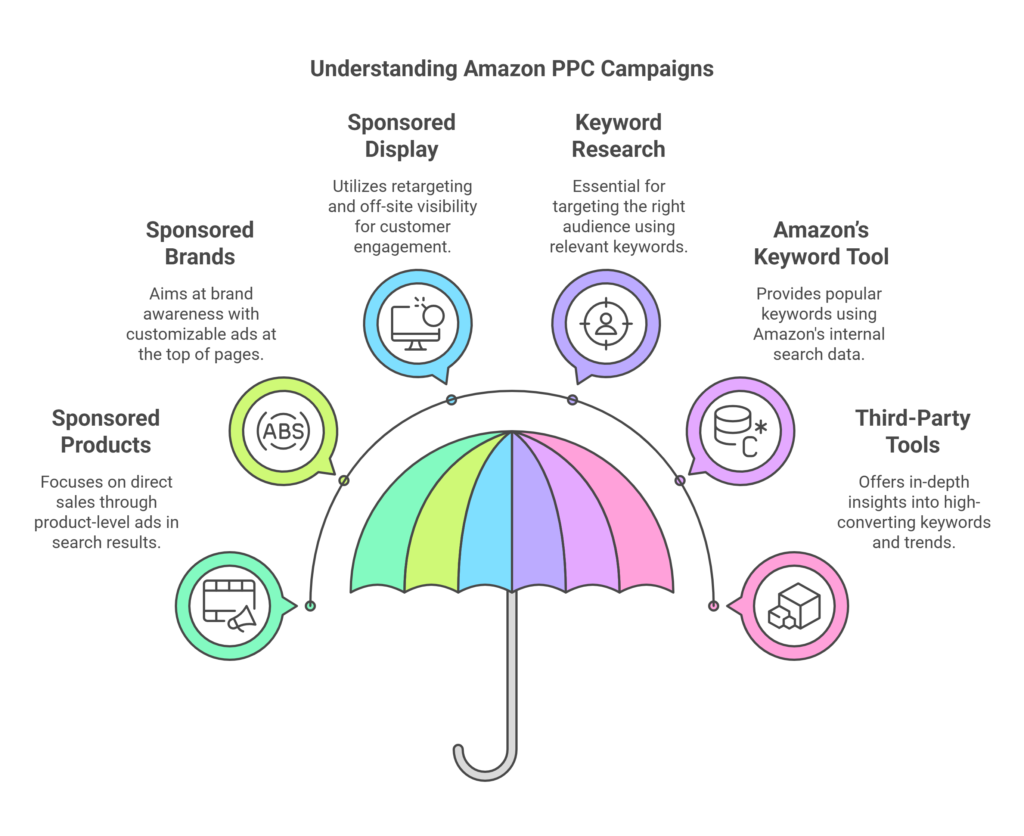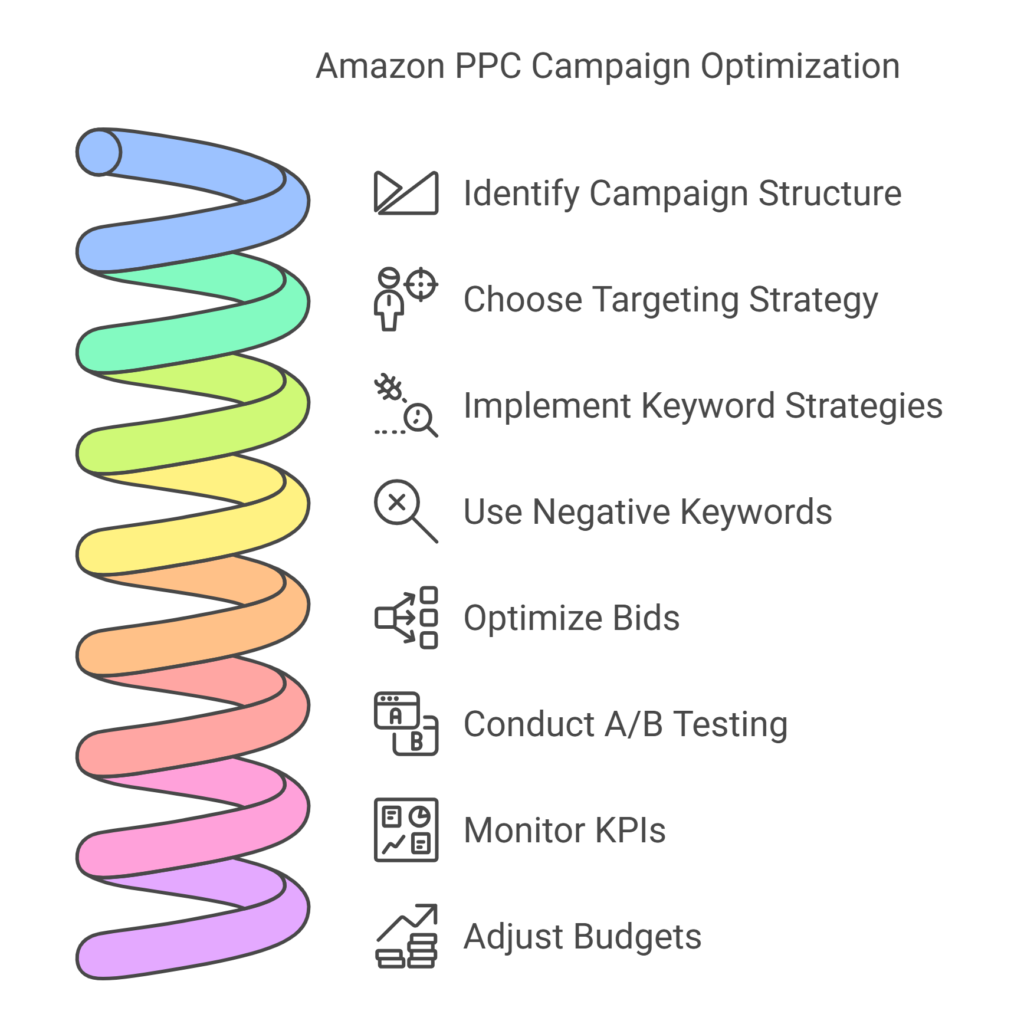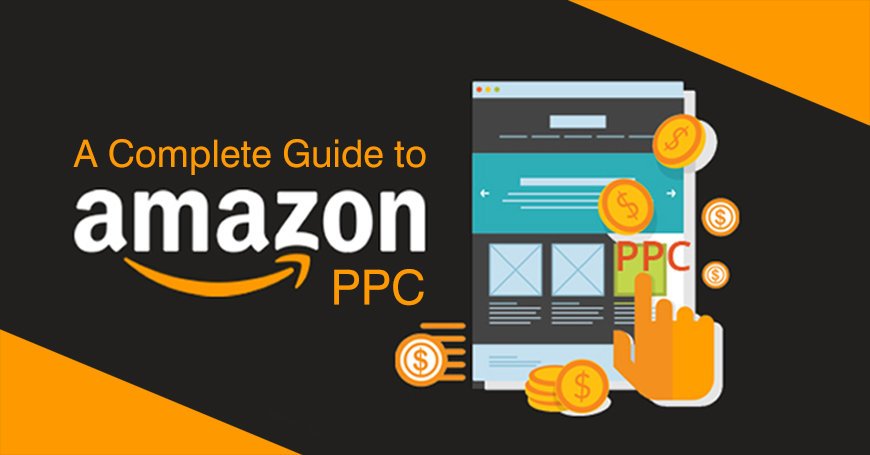How to leverage Amazon PPC for more out of a campaign
To stand out among the millions of other sellers in the Amazon marketplace, a good marketing strategy is the way forward. Targeted traffic to your listings can be achieved through Amazon Pay-Per-Click campaigns and that has been one of the most effective methods. But what happens is that most sellers leave disappointed because they do not reap the expected ROI from their campaigns. At the bottom line, it means learning how to optimize your Amazon PPC campaigns for maximum profitability.
In this blog, we will outline how you can optimize your campaigns to make sure that your PPC is performing at its best.
Understand the Different Types of Amazon PPC Campaigns
Before you begin to optimize, it is important that you learn about the different types of Amazon PPC campaigns available:
Sponsored Products: This will appear in search results and at the bottom of product detail pages – a product-level ad.
Sponsored Brands: These are product-line ads that appear at the top of the page, with a customizable image and text associated with the brand.
Sponsored Display: These ads target the Amazon customer on and off the website with display banners and product recommendations.
Each campaign type is useful for different types of goals. Sponsored Products are most useful for direct sales, while Sponsored Brands is useful in terms of brand awareness. Sponsored Display ads are nice for retargeting and visibility outside of Amazon .
Keyword Research
Keyword targeting is the foundation of any effective PPC campaign. Knowing which keywords your potential customers use to find products like yours will get you in front of the right audience.
Tools to utilize:
Amazon’s Keyword Tool: Uses Amazon’s internal search data to provide popular keywords of relevance to your products.
Third-Party Tools: Leverage the in-depth insights available in Helium 10, Jungle Scout, or SEMrush regarding high-converting keywords, search volume, and trends.
You should aim at targeting long-tail as well as short-tail keywords. Long-tail keywords may have lower search volumes but are known to convert better because they are more specific. Short-tail keywords often attract higher competition but can deliver higher impressions.

Campaign Structure for Success
Campaign structures must also be proper for tracking and optimizing performance. Group your campaigns under some sensible order
Automatic targeting campaign: Amazon will target keywords for you against product details, which helps discover new relevant keywords as well as customer behavior.
Manual targeting campaign: You control what keywords you want to place bids on, thus adding a greater level of precision to your campaigns, but it requires ongoing management to achieve profitable ends.
Exact Match vs Broad Match: Use exact match keywords to target specific terms and broad match for wider reach. Amazon can then match to close variations. Periodically review performance to adjust strategy.
Negative Keywords Focus
It is equally important to choose negative keywords for the campaigns like the choice of words. It will keep your ads from appearing in searches not very relevant to your business if you use negative keywords. For instance, your sells expensive kitchen appliances, so the ad needs not to show up for users who search on “cheap kitchen appliances”.
Regularly check on your search term report to monitor any irrelevant keywords eating into your budget. Implement these as negative keywords to filter better traffic into your account while keeping unnecessary spending away.
Bid Optimisation
There are chances for an ad to never appear by over-bidding. On the other hand, the budget dries out due to overpaying. Bid value needs adjustments that are very time-consuming.
Following are a few strategies using bidding:
Dynamic Bidding: Amazon adjusts your bids based on the likelihood of a sale. This is excellent for automatic campaigns where Amazon has the flexibility to optimize for you.
Fixed Bidding: Set a fixed bid amount and adjust based on your results. This approach offers more control but requires manual monitoring.
Cost adjustment by Placement: There’s the option to bid on higher top-of-search placement and gain greater visibility. These may be able to drive more impressions, which in turn brings more competition, so it’s important to track cost-effectiveness.
Use Amazon's A/B Testing (Experiments)
To explain, Amazon’s A/B testing enables you to test alternative versions of ad content, keywords, or even product pages. However, if you really try to figure out what works best for your target audience, this feature is already gold.
You test different creatives or images, title lines, or bullet points of different versions for helping determine the variant that may perform better based on A/B tests. You test different techniques of keyword targeting or varying different bid strategies.
You regularly monitor and modify your campaigns.
Optimization is a continuous cycle. When you launch a campaign, you need to monitor its performance on a regular basis to determine whether the campaign is on the right track in terms of ROI. Here is the list of most common KPIs to check for:
ACoS or Advertising Cost of Sale: This measures the amount of money you’re spending on advertising relative to revenue that is being generated. The lower your ACoS, the more profitable the campaign tends to be.
RoAS (Return on Ad Spend): This tells you how much revenue you are generating for every dollar spent. Any positive RoAS is going to help support your profitability.
CTR (Click-Through Rate): High CTR means your ads are relevant and engaging enough to your audience.
Conversion Rate: Track how much clicks convert into sales. If a low conversion rate exists, it is time to revisit your product listing and landing page.
Use Amazon's Budget Management Tools
These all help you a bit to adjust your budget from the tools in Amazon. But, you change campaigns to budget more money onto campaigns that perform great and a little less when the campaigns underperform. Again, you’re able to use ad scheduling when the shopping picks up at this time so get maximum visibility high conversion time
Optimization of Product Listing
Sometimes, the problem is not in your PPC campaign but in your product listings. The better your product pages are in terms of clear images, compelling titles, and detailed descriptions, the more likely they are to convert. The more attractive your listings are, the more likely a customer will click and buy after seeing your ad.
Regularly optimize your product listings with high-performing keywords, showing the benefits of your product and improving customer reviews and ratings.
Analysis and Learning of Your Data
The most successful Amazon PPC advertisers are those who continually learn from the data and change their strategies by those data insights. Analyze your campaigns’ performance regularly and use that to refine future campaigns. Find the trends, customer behavior, and seasonal changes that can be influencers for your bidding and keyword strategy.

Conclusion
Amazon PPC optimization is a procedure that needs constant testing, tracking, and revision. Knowing the different types of campaigns, doing extensive keyword research, building a structural campaign, fine-tuning your bid, and focusing on Key Performance Indicators will really maximize profitability on the Amazon platform.
Take the time to experiment and make adjustments based on your data, and you’ll soon find yourself maximizing your ROI and growing your business in the competitive Amazon marketplace.
